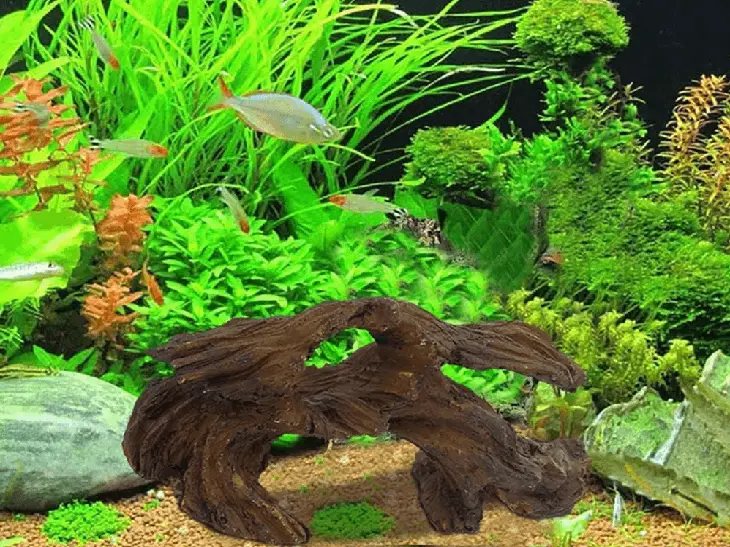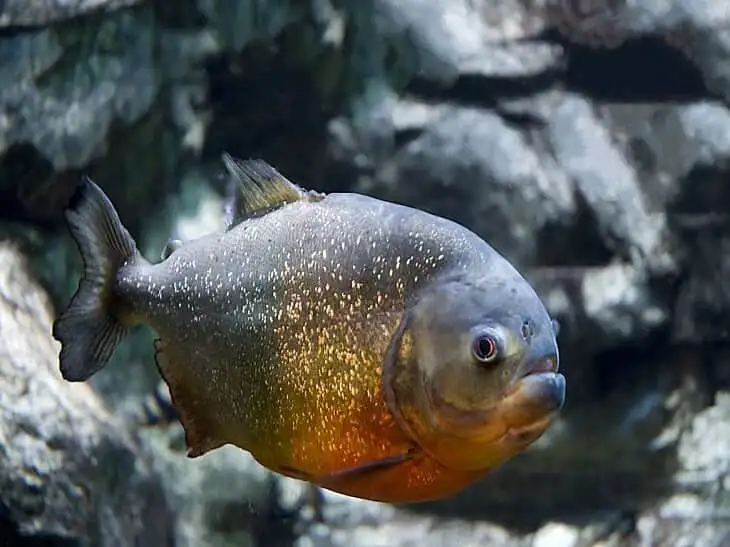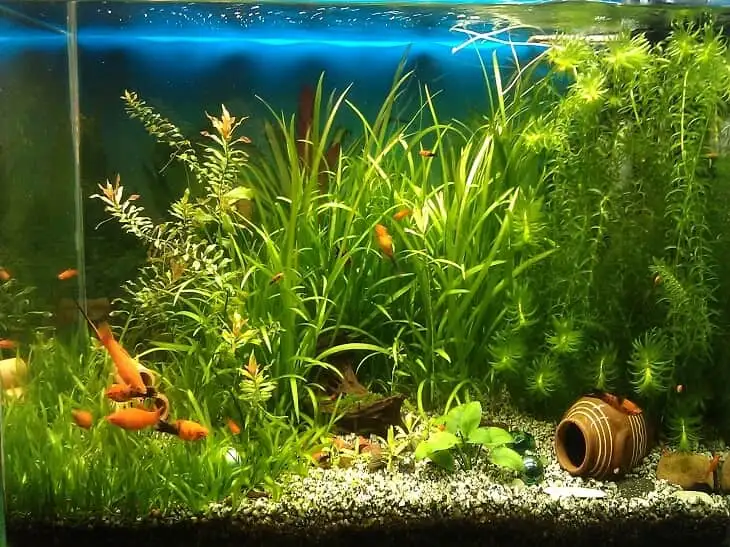WHAT IS AN AQUASCAPE: DEFINITION, CONCEPTS

Aquascape is the art of creating an interior design by placing decorations and plants in an aquarium that mimic a landscape. The technique consists in organizing and modulating the decor elements to recreate an identical terrestrial environment transformed into an aquatic biotope.
Explanation:
Plants, rocks, sand (and possibly plastic decorations) inside the aquarium are arranged to evoke emotion in the aquarist or viewer of the waterscape. Thus, such decoration is called - water plantation.
Explanations of the art of aquascaping can vary like any other art form. According to aquarists, there are three techniques or styles of aquascaping with aquatic plants: Japanese, Dutch and "wild jungle" (natural jungle). Several options include combinations of these three aquascape techniques.
Aquascape is an expensive art; the approximate average price of a 75-liter aquarium is $200, and the price range is $100 to $700, depending on volume. Aquascape aquarium volumes usually remain modest, 150 liters at most.
The aquarist, called an aquascaper (aquaculturalist specializing in water gardens, or aquascaper...), becomes a kind of aquascape sculptor with each new aquarium plant.
Japanese aquascaping, ADA and Amano
As for "Japanese" aquascaping, the "master" of this technique is undoubtedly Takashi Amano. This method is usually described as aquascaping using nature as a model. Of course this is somewhat vague and in order to understand what we are talking about we need to see some examples of his work. Amano describes 3 ways of aquascaping in his aquarium according to the Japanese philosophy of nature: triad, concave and island. The goal of Amano's aquascape style is to take a picture that represents the waterscape he has created.
The Japanese aquascape meets the rules set forth by T. Amano, who created ADA, which supplies a range of specialized equipment designed primarily for aquascape.
Dutch Aquarium, Historical Aquascape
"Dutch" aquascaping is a planted aquarium technique that resembles a very well-kept bed of plants. Annual contests have been held almost since 1960 to determine the most beautiful Dutch plant aquariums!
Dutch aquascaping is historic, more in the European spirit of aquascape design, like an aquatic garden, without trying to copy the landscape.
"Wild Jungle."
"Wild Jungle" aquascaping is a technique of which George Booth is certainly the great master. He uses different textures and colors to achieve a sense of "wild harmony" in the aquarium. Aquascapers accustomed to this technique have a focal point in the aquarium (the base of the aquarium with Dutch plants) and use different textures and colors around the focal point to push, to draw attention in different but very precise directions.
The Aquarium in Amateur Aquascape
As stated above, there are as many variations and combinations of these techniques and styles as you can imagine. Most plant aquariums are aquascapes without even realizing it... The possibilities for decorating aquascape aquariums are endless, the only limit is your imagination. Amano experiments between two other techniques, Dutch and wild jungle, for the purpose of his aquascape works.
Marine aquascaping is in its infancy and has no real criteria for decoration. Even though we can easily assume that hardscape will consist of living rocks and sand, the aquascape part seems more delicate to consider: corals are not as easy to handle as plants, and algae cannot be controlled in the water.
Lighting in aquascaping
Aquascapers tend to light their aquariums very brightly. This, for a simple reason: it is necessary to strongly illuminate, the herbaceous plants at the bottom of the aquarium. These plants, at substrate level, do not necessarily need more light for photosynthesis than other species, but their location in the water layer requires more light above the water surface to reach the bottom.
If you consider that the loss is 5 to 10 % of the intensity per cut of a 10 cm layer of water, then the light coming through a 40 cm layer of water can already be reduced by 40 %, which may become insufficient in many "classic" cases.
Is aquascape possible in a saltwater aquarium?
Aquascape in a saltwater aquarium is a controversial issue because controlling the size and growth of algae or corals is almost impossible. Most tests in reef aquariums are unsuccessful and also very expensive, and hard corals are very expensive. It will be necessary to keep in mind that it is impossible to avoid the loss of corals which are rare in most reef aquascaping operations.








